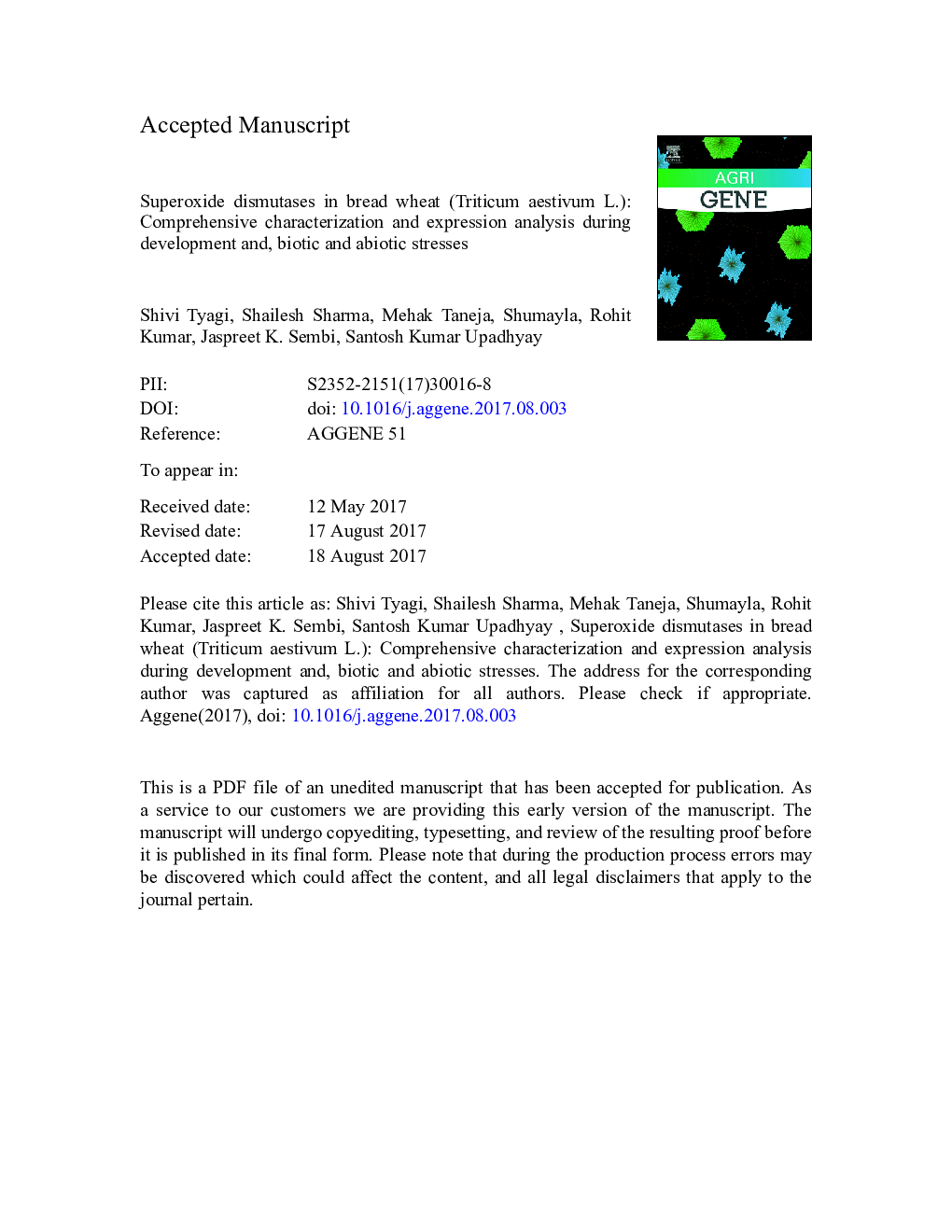| Article ID | Journal | Published Year | Pages | File Type |
|---|---|---|---|---|
| 5588881 | Agri Gene | 2017 | 45 Pages |
Abstract
Reactive oxygen species (ROS) induce oxidative stress at high concentrations and act as signaling molecules at low concentrations. Superoxide dismutases (SOD) are defence-related proteins, which are involved in detoxifying ROS. SODs have been characterized in various plants, but their comprehensive characterization has not been performed in Triticum aestivum. Herein, a total of 23 TaSOD genes were identified, which were classified into fourteen TaCu-ZnSOD and nine TaFe-MnSOD genes based on their domain organization. These genes were located on various homeologous chromosomes of each A, B and D-subgenome. Higher number of genes on each subgenome than their progenitor genome indicated the role of duplication events during the evolution of TaSODs. The phylogenetic analysis indicated evolutionary conservation in SODs from various plant species. Gene structure in terms of exon/intron organization and intron-phase, and physico-chemical properties like molecular weight and pI was variably conserved in homeologous TaSODs. Most of the Cu-ZnSODs were predicted as cytoplasmic, while Fe-MnSODs were chloroplastic and mitochondrial. Both TaCu-ZnSODs and TaFe-MnSODs were found structurally conserved in terms of various metal binding and active sites, and secondary and tertiary structures as well. They showed putative interaction with each other and other ROS detoxifying enzymes like catalases and peroxidases. Specifically high expression of a few TaSODs in certain tissue developmental stages suggested their precise role in those tissues. TaFe-MnSOD1 group genes were highly expressed during development of grain. Constitutive expression of certain genes indicated their role during all developmental stages. The modulated expression of a few genes during biotic (TaCu-ZnSOD3-A, TaFe-MnSOD2-A) and abiotic stresses (heat; TaCu-ZnSOD3-B, TaFe-MnSOD1-B, drought; TaFe-MnSOD1-A, salt; TaFe-MnSOD2-A) suggested their function in a stress response. The present study provided inclusive characterization of SOD proteins in T. aestivum, which extends the opportunity for future functional characterization of each individual protein.
Related Topics
Life Sciences
Agricultural and Biological Sciences
Animal Science and Zoology
Authors
Shivi Tyagi, Shailesh Sharma, Mehak Taneja, Shumayla Shumayla, Rohit Kumar, Jaspreet K. Sembi, Santosh Kumar Upadhyay,
